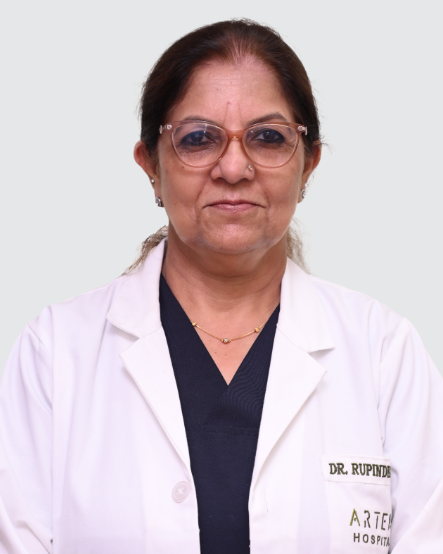World Ovarian Cancer Day 2025 : No Women Left Behind

Quick Summary
- Ovarian cancer is hard to detect early due to subtle symptoms and ineffective screening.
- 2025's theme is "No Woman Left Behind," focusing on equitable access to care.
- The goal is to ensure all women have access to information, early detection, and treatment.
- This emphasizes the need for improved awareness and healthcare accessibility.
Did you know? Ovarian cancer is one of the most difficult gynecologic cancers to detect early. And the reasons are subtle symptoms and ineffective screening. This year, in 2025, the theme is "No Woman Left Behind". It urges a renewed emphasis on equity by guaranteeing that all women, irrespective of location or status, have access to knowledge, early detection, and efficient treatment.
Understanding Ovarian Cancer
Ovarian cancer is a type of cancer that arises in the ovaries, which are part of the female reproductive system. The cancer begins when abnormal cells in or near the ovaries undergo mutations, causing them to grow and divide uncontrollably. These cancer cells can invade nearby tissues and spread to other body parts.
It is the fifth most common cancer among women and causes more deaths than any other cancer of the female reproductive organs. In 2024, India recorded approximately 33,000 deaths due to ovarian cancer, making it the country with the highest number of ovarian cancer deaths globally.
Recognising the Symptoms
Ovarian cancer symptoms are often vague and easily mistaken for other conditions. Common warning signs include:
Bloating or swelling in the abdomen
Difficulty eating or feeling full quickly
Changes in urinary habits (urgency or frequency)
Pelvic or lower abdominal pain
Back pain
Unexplained weight changes or abnormal bleeding
These non-specific symptoms result in many women being diagnosed after the cancer has spread. Hence, early detection is critical yet challenging.
Risk Factors and Prevention
The exact cause of ovarian cancer is unknown. However, there are several identified risk factors:
Age (most common in women aged 65-74)
Use of estrogen-only hormone replacement therapy
Family history of ovarian or breast cancer (especially with BRCA1 or BRCA2 gene mutations)
Fewer pregnancies or late childbearing
Personal history of breast cancer
Conversely, using birth control pills has been shown to reduce risk.
Breaking the Barriers: Access to Early Detection and Diagnosis
Unlike breast or cervical cancer, there's no routine screening test to catch ovarian cancer early. That means most women only discover something's wrong when they start noticing symptoms; by then, it might already be serious. Tests like pelvic exams, scans, or blood work usually come into play only after those signs appear.
This delay can be even more dangerous for women who don't have easy access to healthcare. That is why we need to push for better awareness, support, and access to care for every woman, no matter where she lives or what her circumstances are.
Personalised and Advanced Treatment Options
Treatment for ovarian cancer is highly individualised, often involving a combination of surgery and chemotherapy. Newer approaches include:
Advanced surgical techniques (including minimally invasive and fertility-sparing options)
Hyperthermic intraperitoneal chemotherapy (HIPEC)
Targeted therapies and immunotherapy
Participation in clinical trials for access to cutting-edge treatments.
Empowering Women: Care, Access, and Action
Comprehensive care goes beyond medical treatment. Emotional support, palliative care, and access to patient advocacy and support groups are essential for improving quality of life during and after treatment.
Education: Spreading awareness about symptoms and risk factors empowers women to seek timely care.
Access: Advocating for healthcare equity ensures that all women, regardless of geography or socioeconomic status, can access diagnosis and treatment.
Research: Supporting clinical trials and research helps develop better detection methods and more effective therapies.
Conclusion
To close the gaps in ovarian cancer care, communities, policymakers, and healthcare professionals are being urged to take action by the "No Woman Left Behind" campaign. We can improve outcomes and ensure that every woman has the opportunity to fight and survive ovarian cancer by prioritising awareness, early detection, and fair access to cutting-edge therapies.
References
All the articles on HexaHealth are supported by verified medically-recognized sources such as; peer-reviewed academic research papers, research institutions, and medical journals. Our medical reviewers also check references of the articles to prioritize accuracy and relevance. Refer to our detailed editorial policy for more information.
- Cleveland Clinic. Ovarian Cancer: Risk Factors, Signs, Stages, Diagnosis & Treatment [Internet]. Cleveland Clinic. 2022.

- Ovarian cancer - Care at Mayo Clinic - Mayo Clinic [Internet]. Mayoclinic.org. 2019.

- Seladi-Schulman J. Epithelial Ovarian Cancer: Symptoms, Treatment, and Outlook [Internet]. Healthline. Healthline Media; 2023 [cited 2025 May 6].

- Ovarian cancer: MedlinePlus Medical Encyclopedia [Internet]. medlineplus.gov.

- Cleveland Clinic. Epithelial Ovarian Cancer: Types, Stages, Symptoms & Causes [Internet]. Cleveland Clinic. 2022.

- Get Ovarian Cancer Treatment | Cleveland Clinic [Internet]. Cleveland Clinic. 2025 [cited 2025 May 6].

- National Cancer Institute. Advances in Ovarian Cancer Research - NCI [Internet]. www.cancer.gov. 2022.

- Dhende PD, Patil LY, Kusum Jashnani. Spectrum of ovarian tumors in a tertiary care hospital. Indian Journal of Pathology and Oncology [Internet]. 2021 Feb 20 [cited 2025 May 6];8(1):133–9.

- Ovarian Germ Cell Tumors: What is it, Causes, Symptoms & Treatment [Internet]. Cleveland Clinic.

- Ovarian Cancer [Internet]. Illinois.gov. 2024.

- Matulonis UA, Sood AK, Fallowfield L, Howitt BE, Sehouli J, Karlan BY. Ovarian Cancer. Nature Reviews Disease Primers [Internet]. 2016 Aug 25;2(1).

- Ovarian Cancer Outcomes | Cleveland Clinic [Internet]. Cleveland Clinic. 2021 [cited 2025 May 6].

Last Updated on: 7 May 2025
Reviewer

Dr. Aman Priya Khanna
MBBS, DNB General Surgery, FMAS, FIAGES, FALS Bariatric, MNAMS General Surgery
13 Years Experience
Dr Aman Priya Khanna is a highly experienced and National Board–Certified Laparoscopic, GI, and Bariatric Surgeon with over 13 years of clinical expertise.
He is widely regarded as one of the best bariatric surgeons in Ahmedabad, ...View More
Author

With over 5 years of experience in content writing, SEO, marketing, branding, social media, and copywriting, she creates persuasive content that drives results. For the past 3 years, she has focused on medical cont...View More
Expert Doctors (10)
NABH Accredited Hospitals (6)
Latest Health Articles


















